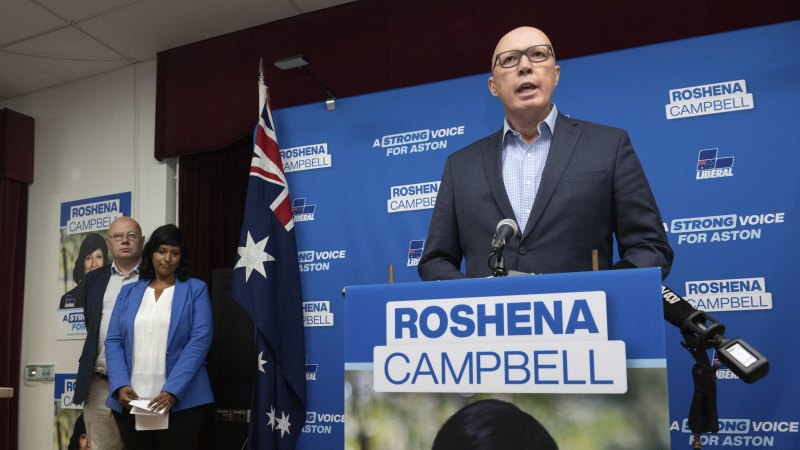The result of Saturday’s Aston byelection is indelible proof that the Liberal Party is being expelled from its heartland in one of Australia’s biggest cities and faces a daunting challenge in making itself relevant to contemporary politics.
Federal Liberal leader Peter Dutton accepted responsibility for leading the first federal opposition in a century to lose a seat to the government in a byelection, but he blamed the loss on the Liberals’ standing in Victoria, which he noted had been in a decline since John Howard won government.
“I think in recent years the Liberal Party has allowed itself to be defined by our opponents, and I think it’s time for us to take that back,” he said. “Stand up for what we believe in, whether it’s trendy or not.”
But it’s obvious voters are not buying the old pitch. Dutton would be better off grasping the nettle and recasting the many Liberal policies that have lost traction with voters, especially among women, younger voters and ethnic communities.
After the federal election rout, Dutton’s patented aggressive negativity was all the Coalition had going for it as Labor reigned supreme. But nearly a year later, that approach is no longer fit for purpose. It backfired last month when he injudiciously declared Aston would be a leadership test between himself and Prime Minister Anthony Albanese.
Indeed it was, but not in the way he hoped. Instead, the result is a big vote of confidence in how admirably the Labor government has conducted itself since its election 11 months ago.
Aston is a stunning setback for the Liberal Party. Once, when Robert Menzies’ values held sway in the party, Victoria was considered the jewel in the Liberal crown, and the philosophy prospered down decades of Australian state and federal politics.
But more recent leaders turned from ideals to pragmatism, and, urged by elements of the media, the party moved to the right. Eventual disenchantment with such hardline politics has handed Labor power in all mainland state parliaments and, with the Aston loss, reduced the Liberals to just two federal seats in Melbourne, a city on the verge of becoming the nation’s most populous by 2032.
Labor’s Mary Doyle has won Aston, a mortgage-belt seat where families are feeling the economic pinch, on her second tilt. Her victory also shakes the Liberals’ cornerstone claim of voter trust in their economic management.
That said, the politics of the byelection was sometimes local: Liberal candidate Roshena Campbell was pilloried for living in inner-city Brunswick; the Liberals’ disunity emerged last week in a public brawl over Victorian state MP Moira Deeming’s suspension for attending an anti-transgender rights protest in Melbourne that was gatecrashed by neo-Nazis.
The seat also has a large Chinese community of 14 per cent – compared to a nationwide average of 5.5 per cent. A Liberal post-election review last December found the Morrison government’s criticism of Beijing and by implication of the local communities, had soured the Chinese vote. Some may have been lured to Labor by admiration for Victorian Premier Daniel Andrews’ admittedly controversial trip to China last week.
Doyle stood against Liberal encumbent and former Morrison government minister Alan Tudge last May and achieved a 7.32 per cent swing, thanks to the odour surrounding the Coalition and Tudge’s relationship with a ministerial employee that resulted in the woman receiving $650,000 in damages.
Re-elected, Tudge bailed last February, necessitating Saturday’s byelection, in which voters rewarded Doyle with a further swing of 6.42 per cent.
Dutton must put Aston behind him. He faces another bruising byelection in the NSW seat of Cook should Scott Morrison decide to quit politics, but the task at hand is to reshape the Liberals from a backward-looking shell into a visionary and potent opposition.
Patrick Elligett sends an exclusive newsletter to subscribers each week. Sign up to receive his Note from the Editor.
Most Viewed in Politics
From our partners
Source: Read Full Article
